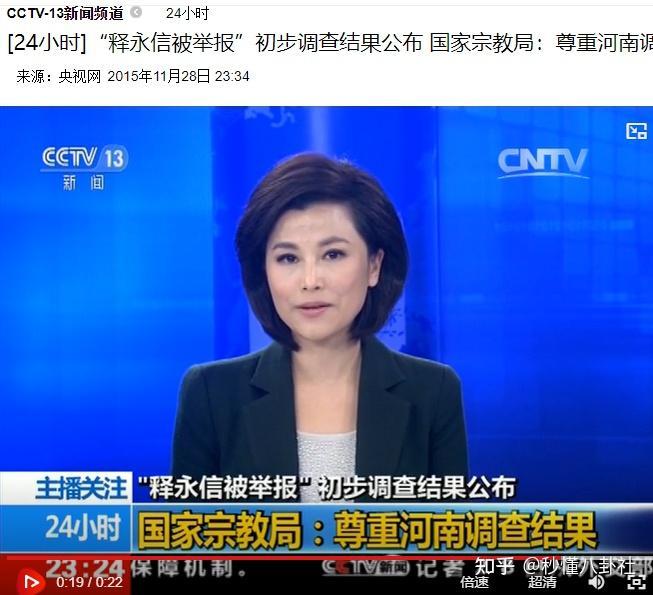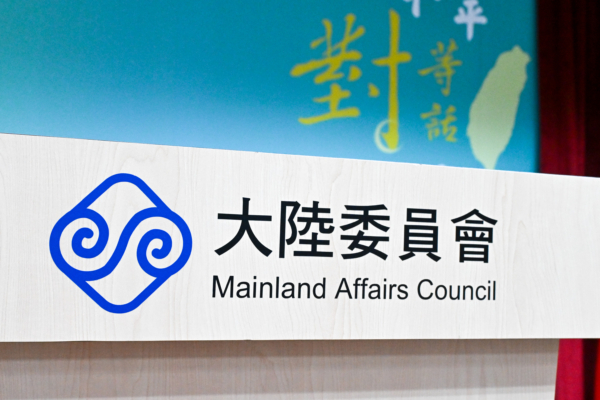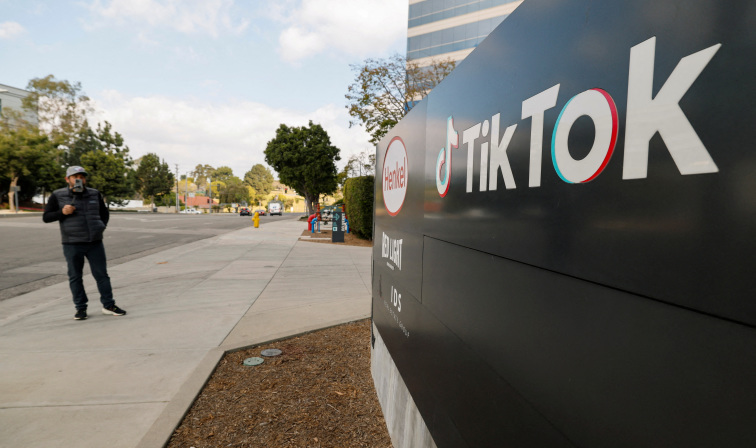In February 2017, the official conclusion of the investigation into Shi Yongxin was that there was "insufficient evidence," stating that the allegations were "unsubstantiated." The CCP&9;s State Administration for Religious Affairs expressed that it respected the findings of the Henan investigation. (Image from the internet)
[People News] Compared to the scandal ten years ago, Shi Yongxin’s current downfall is far more intense, bizarre, and surreal—leaving observers with countless unanswered questions.
Strange Timeline Surrounding Shi Yongxin’s Fall
On the morning of July 26, rumours spread online that Shi Yongxin had been taken away for investigation. On July 27, a “police report” claiming that Shi tried to flee but was intercepted by authorities went viral. That same day, the Kaifeng Public Security Bureau announced, “The report is fake. Please stop spreading it. We are currently handling the matter.”
At midday on July 27, a staff member from the Dengfeng Public Security Bureau said, “We haven’t received any information. Please refer to Shaolin Temple’s official announcement.” That afternoon, the Henan Provincial Ethnic and Religious Affairs Commission told reporters: “We saw the news just like everyone else—no new updates.” And the Zhengzhou Buddhist Association replied: “We don’t know. It’s a Sunday, and we’re not clear on the situation.”
Finally, on July 27, the Shaolin Temple Management Office issued a statement: Shi Yongxin, Abbot of Shaolin Temple, is suspected of criminal offences and is under joint investigation by multiple departments. The next day, July 28, the Buddhist Association of China announced it had agreed to revoke Shi Yongxin’s ordination certificate. As of that morning, Shi’s name had already been scrubbed from the temple’s website, with only a mention under “Historical Abbots.”
In just two days, from July 26 to 28, Shi Yongxin—once a religious leader, business tycoon, and Party-connected elite—fell from grace into complete disgrace, now facing criminal investigation and widespread condemnation.
Strangely, this bombshell wasn't first released by any public security bureau or religious commission, but by a newly formed entity called the Shaolin Temple Management Office.
What exactly is this “Management Office”? According to Caixin, it was established in May 2025 as a permanent government body stationed at Shaolin Temple, staffed mainly by officials from the Zhengzhou and Dengfeng Religious Affairs Bureaus and the United Front Work Department.
This detail is telling—it aligns with the theory that Shi Yongxin’s fall may have little to do with economic crimes, and more likely stems from a political power struggle hidden from public view. The Religious Affairs Bureau and United Front Department are CCP mechanisms used to control, co-opt, and suppress religion.
Back in July 2015, Shi was publicly accused by monks of economic crimes and adultery. The government denied the allegations then. Now, ten years later, they’re using the same reasons—economic issues and violations of Buddhist precepts—to bring him down.
That’s what makes this fall from grace so unusual.
Hong Kong Media Reveals What’s Behind Shi’s Arrest
According to Caixin, insiders say Shi was “taken away” late at night on July 25. The next day, rumours of his detention began spreading. He reportedly wasn’t caught off guard—after returning from a foreign trip around Lunar New Year 2025, he had already been banned from leaving China and was questioned by authorities. Yet, at the time, he was still free to move within the country.
That overseas trip? It refers to February 1, 2025, when Pope Francis received Shi Yongxin and a Shaolin monk delegation at the Vatican.
According to HK01, Shi’s "cultural exchange" delegation met with the Pope on February 1. Vatican press photos show Shi with three monks in the Pope’s private office. While packaged as interreligious dialogue, this visit—unauthorised by the CCP—may have been seen by Beijing as an unauthorised diplomatic act.
The article argues that this meeting exceeded the bounds of religious exchange. Under the framework of “Sinicising religion,” all religious activity must serve the CCP’s governance and national unity goals. Any unsanctioned contact with foreign religious leaders is seen as a challenge to state diplomacy and a threat to national authority.
Shi Yongxin had long been used by the CCP as a united front pawn, presented as a religious ambassador to maintain unofficial communication with the Vatican. This wasn’t his first visit—he had met Pope Benedict XVI in the past and visited the Vatican on November 23, 2023.
The CCP has long sought official diplomatic ties with the Vatican. It may have turned a blind eye to Shi’s misconduct because he served as a useful go-between. But in May 2025, Pope Francis died and was succeeded by the ultraconservative American Pope Leo XIV. That same month, the “Shaolin Temple Management Office” was established. To the Party, Shi Yongxin’s usefulness had expired—and like an old workhorse, he was discarded.
If Shi truly met the Pope without authorisation, that would indeed cross a serious political red line. But the mystery is this: As a National People’s Congress delegate, CPPCC member, and vice president of the Buddhist Association of China—essentially a vice-ministerial-level official—how could Shi not understand the rules of CCP diplomacy and the consequences of overstepping?
Independent media figure Aisen revealed that Shi’s Vatican meeting was not arranged by Chinese authorities, nor was he acting in his role as a religious leader. Instead, it was coordinated by the Europe-Asia Centre, a nonprofit organisation, and Shi attended as a “cultural envoy.” Aisen believes that Shi harboured ambitions to become a global religious figure. After meeting the Pope on February 1, he reportedly travelled to the Middle East to meet another religious leader.
If Shi did indeed aspire to global religious leadership, what was his endgame? As a businessman-monk and political opportunist, Shi built a dual-track strategy: domestic and international capital networks. As early as 1990, he led Shaolin martial arts and Buddhist delegations to over 40 countries and regions, including Hong Kong, Taiwan, the U.S., Japan, and South Korea. The Shaolin Temple hosted cultural festivals and built overseas branches. Leaders like Putin, Henry Kissinger, and James Soong have all visited Shaolin.
Shi was also well aware of his own scandals and understood the brutality of CCP power struggles. He knew that if his political backers fell, he could be jailed at any moment. But with a global religious title, he might gain immunity—offering a platform for money laundering and international influence, making him politically untouchable. In this light, Shi's ambition looks like a high-stakes gamble.
So Who Was Shi Yongxin’s Political Patron?
Journalist Luo Changping posed three questions on social media: 1. Why did Shi insist on meeting Pope Francis despite opposition from Party authorities? 2. His scandals involving women and money were widely exposed 10 years ago—how did he survive back then, and who protected him? 3. Will the two alleged murders inside the monastery be investigated?
The third question—“two murders in the temple”—remains a mystery. But question one is telling: Was Shi emboldened because his political patron had already fallen, leaving him desperate? So who exactly was Shi’s political protector?
Online users mockingly say Henan produced four infamous figures: Hu Xijin, a pro-Party mouthpiece. Xu Jiayin, real estate tycoon. Shi Yongxin, “Shaolin CEO”. Ma Baoguo, fake martial arts star. Two of them have already fallen. Xu Jiayin’s arrest sent shockwaves through the Party elite. Rumour has it that Ma Xingrui may soon be the next to fall.
Shi Yongxin’s political backers? The bomb has already gone off. Now it’s time for the public to sit back and watch the fallout unfold.
(Originally published by People News)











News magazine bootstrap themes!
I like this themes, fast loading and look profesional
Thank you Carlos!
You're welcome!
Please support me with give positive rating!
Yes Sure!